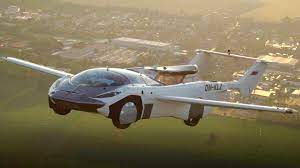Are Flying Cars The Future Of Transportation?
- inthaloop1
- Mar 22, 2023
- 2 min read
With the rapid pace of development in the field of aviation, it is no surprise that there is renewed interest in the concept of flying cars. The idea of a personal aircraft that can take off and land vertically has been around for many years, but it has only recently become technologically feasible.

Are flying cars the future of transportation? In this blog post, we will explore the potential of this technology and its implications for the future of transportation. We will also look at some of the challenges that need to be overcome before flying cars can become a reality.
Advantages of Flying Cars
One of the main advantages of flying cars is that they could greatly reduce traffic congestion. With the ability to take off and land vertically, they would not need to use roads and highways like traditional cars, freeing up space on the ground. This could be particularly beneficial in urban areas where traffic is often gridlocked. Flying cars could also greatly improve transportation efficiency. They would be able to travel in a straight line between two points, rather than having to follow the twists and turns of a road network. This could greatly reduce travel time, particularly for longer distances, and improve the overall speed of transportation.
Another advantage of flying cars is that they could be used for emergency services, such as transporting patients or supplies to remote areas. They could also be used for search and rescue missions, as they would be able to quickly and easily access hard-to-reach areas.

Challenges Facing Flying Cars
Despite the potential advantages of flying cars, several challenges need to be addressed before they can become a reality. One of the main challenges is safety. Flying cars would need to be designed and built to extremely high safety standards in order to avoid accidents and collisions. There would also need to be significant regulatory and legal frameworks put in place to ensure the safety of passengers and other airspace users.

Another challenge is infrastructure. Flying cars would require new infrastructure, such as landing pads, navigation systems, and air traffic control systems. This would require significant investment and planning to ensure that the necessary infrastructure is in place before flying cars can become a viable mode of transportation.
Environmental concerns are also a factor. Flying cars would likely use fossil fuels, which could lead to increased carbon emissions and other environmental impacts. There would need to be significant advancements in alternative and sustainable fuel sources to mitigate these impacts.

Overall, flying cars have the potential to revolutionize transportation and improve efficiency and convenience in many areas. However, there are significant challenges that need to be addressed before they can become a reality, including safety, infrastructure, and environmental concerns. As technology continues to advance, it will be interesting to see how these challenges are addressed and whether flying cars become a viable mode of transportation in the future.




Comments